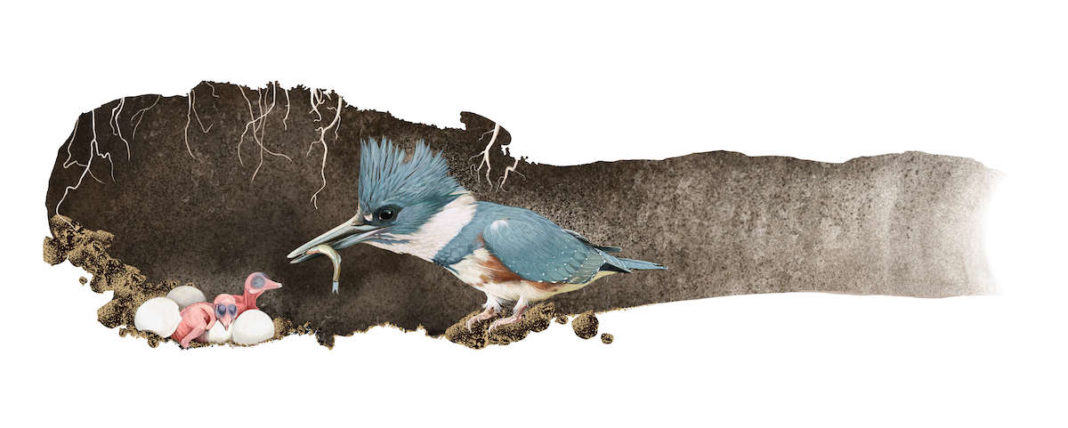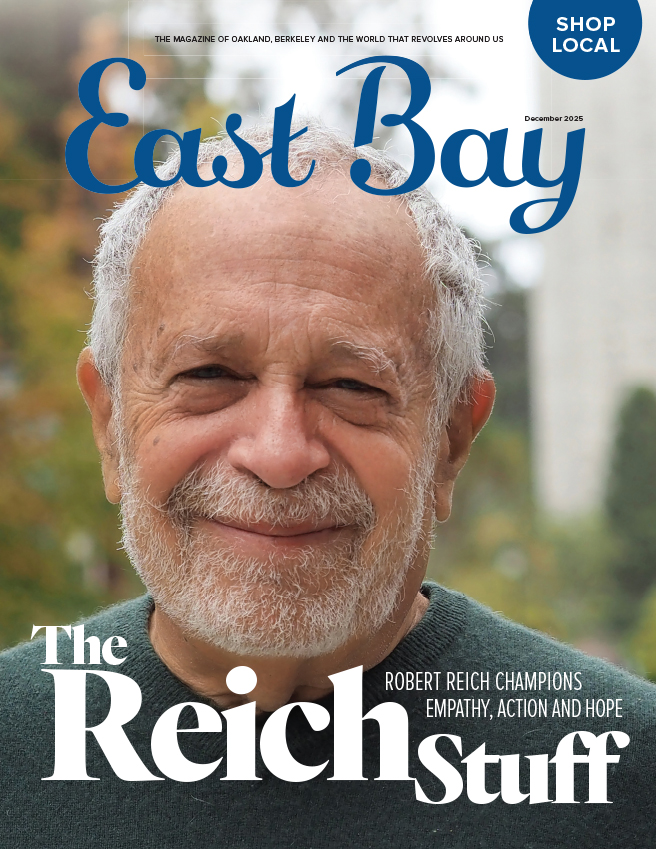Over the past 12 years with her studio team at Ink Dwell, Jane Kim has painted dozens of larger-than-life monarch butterflies, 270 different types of birds, entire coastal ecosystems and an endless array of illustrations for cities, museums, homes and personal projects. Yet it wasn’t until 2023 that she had heard of an animal, native to California, called the ringtail.
It’s not her fault, really. Most people won’t catch a glimpse of one in their lifetime, as the cat-like mammal (actually a member of the racoon family) is completely nocturnal and tends to build its den in hidden places. For Kim, its existence was revealed via one of her favorite assignments—documenting the Bay Area’s diverse array of plants, animals and natural wonders for Bay Nature’s seasonal almanac. The ringtail appeared in the publication’s Spring 2023 version; Kim’s been working with them since the almanac concept’s inception in 2018.
The short, bite-size informational tidbits that accompany Kim’s illustrations belie the incredible amount of research that goes into bringing these creatures to life. The actual art on the page (or screen) is, if she had to guess, about 20% of the effort.
“[My process] doesn’t actually begin with the visuals, in a weird way,” she shares. “It actually begins with the story.”
This story seeking is Kim’s favorite part—the reading and studying of journals, novels, non-fiction books and scientific collections to get to know whatever she’s trying to depict. She loves the rabbit holes she falls into and the concepts she gets to explore, from the technical to the allegorical, the mythical to the cultural. It is for this very reason she cannot tell me which California creatures in the almanac have been her favorite.
“Whenever I’m working on a project or personal work,” she says, “the subject of that particular piece is often my favorite in the moment because what I do often requires an in-depth relationship with that particular species.”
I find it telling that, when pressed, she offers up a few examples. One is a nesting scene for the belted kingfisher; another is an illustration of four types of barnacles. Both are elusive—the kingfisher’s nest underground, the barnacles usually glimpsed after they’ve died and dried upon the rocks. Like her delight in getting to know these species, she finds it rewarding when people share how her work has made them see what wasn’t there before—whether that’s a new animal or a particular detail.
In July, Kim shifted her focus for the rest of the year to a personal project that explores desire. That, too, feels hard to grasp, too big, too abstract. Yet she draws me into her process, sharing tales of the color green, a pigment that could only maintain its permanence in the real world with the addition of a poison.
“If I can get people to desire nature—really go to the lengths that humans will go to when they desire something—that would be a massive win,” she says.
To her credit, I can’t wait to see what she’s been working on.











